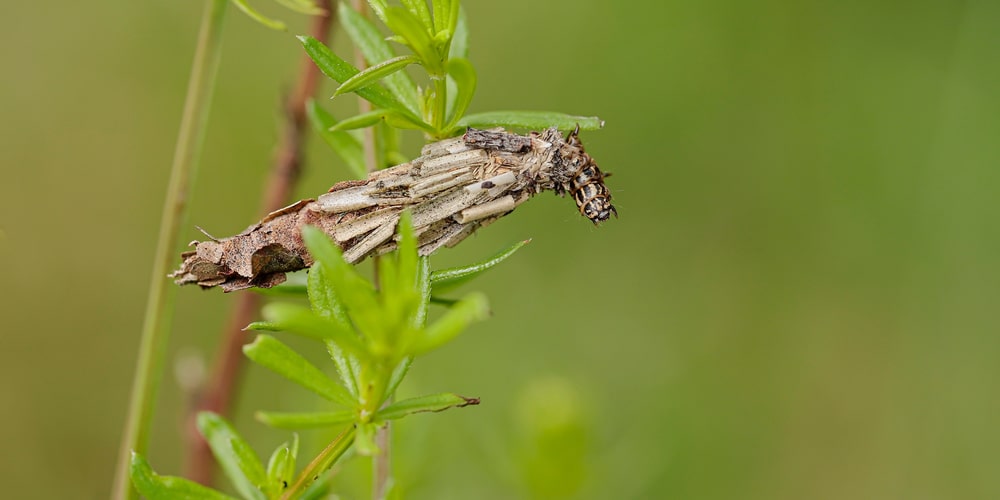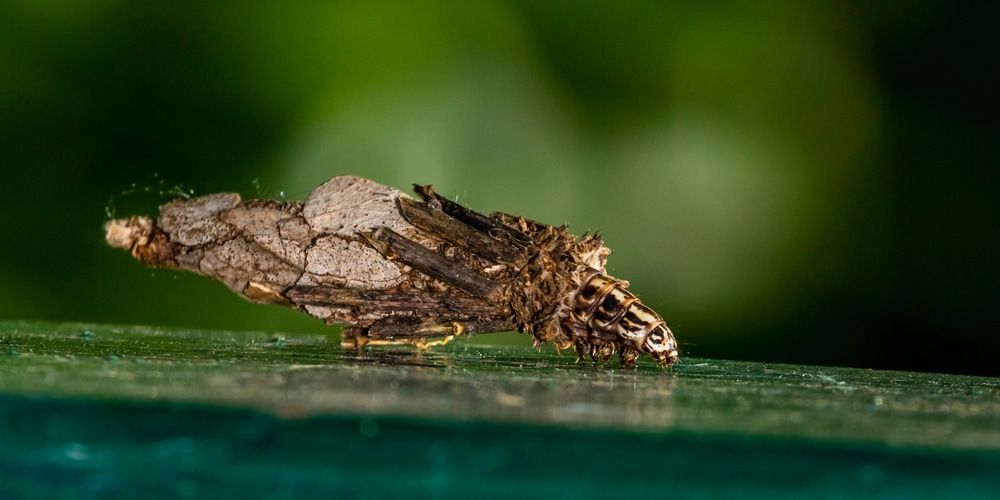Bagworms are pests that affect both deciduous and evergreen shrubs and trees. They cause damage by feeding on the leaves- eventually, a group of bagworms can defoliate a plant and weaken it in the process. With no way to collect energy or food, the plant will likely die.
Deciduous plants can actually survive a bagworm infestation since they can regenerate stems and leaves quickly, but how about evergreens? Can an evergreen recover from bagworms?
Can Evergreen Plants Recover From Bagworms?
Evergreen varieties are less likely to recover from a bagworm infestation, mainly because they’re very slow when it comes to regenerating new leaves. If you have an evergreen shrub or tree that’s been heavily defoliated by caterpillars or moths, then chances are that they aren’t worth saving.
As a general rule, if an evergreen loses more than half of its foliage then it may never recover. However, there’s a slim chance that it will, albeit very slowly.
If you’re okay with a yard, garden, or landscape that has a damaged evergreen then you can allow the plant to recover, which will take years. On the other hand, if the evergreen has a functional use, such as a hedge or privacy screen, then it will have been ruined by the bagworms and can be removed.
It’s worth noting that trees will stop growing and become stunted if their growing point is lost. In the end, the choice is yours, and depending on how optimistic you are that the evergreen will recover.
How to Prevent Evergreen Bagworm Infestation
The best way to prevent excessive defoliation (and possibly the death) of your evergreen shrub or tree is to take immediate action the moment you spot the bagworms.
The good news is that bagworms do not spread quickly and cause damage over a long period. You’ll probably see them and have a chance to stop the spread using a specialized insecticidal spray. Other signs of bagworm infestation include yellowing leaves and an alarming loss of foliage, otherwise known as defoliation.
It’s recommended that you keep a close eye out for bagworms and do an inspection from time to time. Bagworms can be brought by new plants or from surrounding shrubs and trees.
Will My Evergreen Recover From a Bagworm Attack?
To determine if your evergreen has a chance of surviving a bagworm attack, check the remaining leaves. Plants will need leaves to collect food and energy to grow, and an evergreen needs them more than their deciduous counterparts since they regrow so slowly.
There are several steps you can take to help an evergreen recover faster from a bagworm infestation.
Fertilize the Evergreen
After getting rid of the bagworms, it’s recommended that you fertilize your shrub or tree to encourage new growth. Follow the instructions on the product label and feed your evergreen once a month. With some luck, the plant will respond and sprout new stems and foliage to start the regeneration process.
Prune the Defoliated Stems or Branches
Evergreen stems and branches that have been defoliated by bagworms aren’t likely to recover. That said, you can help your shrub or tree look its best by removing the dead branches using a hand saw or pruning shears, depending on the plant’s size. You can wait until next spring to make the cuts and go from there.

